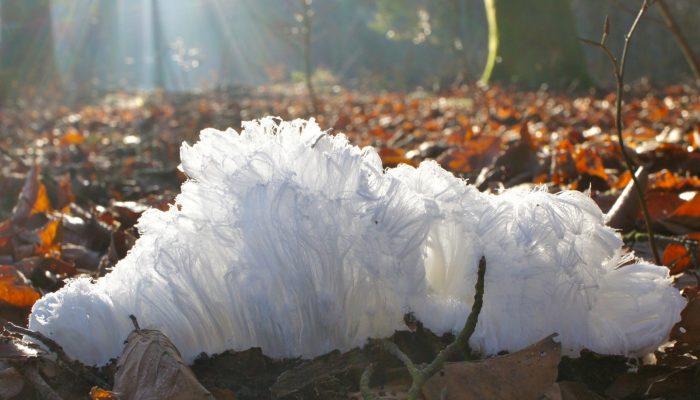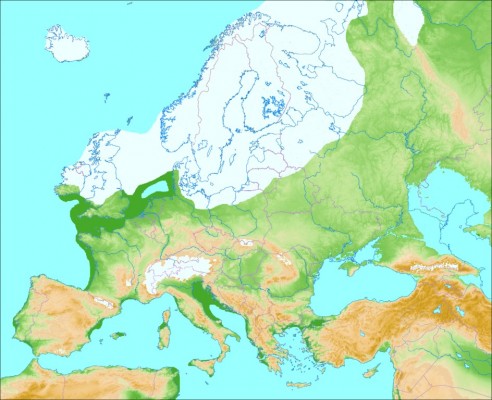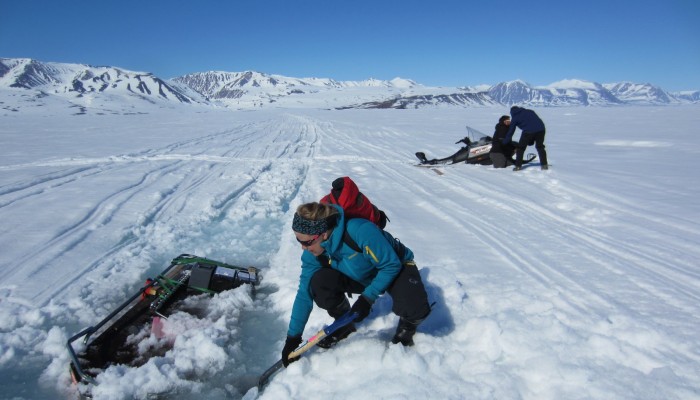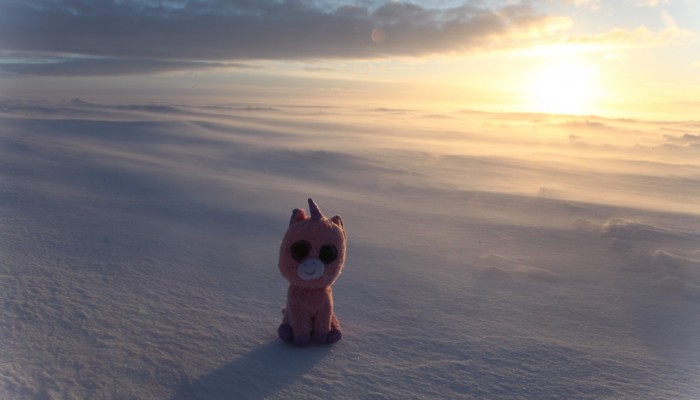When you go down to the woods today you’re in for a big surprise….. hair ice! Did you know that there is a type of ice called hair ice? It is shaped like fine, silky hairs and looks like white candy floss. It grows on the rotten branches of broad-leaf trees during humid winter nights when the air temperature drops slightly below 0°C. A 100-year-old theory states that hair ice a ...[Read More]
Image of the Week — Glowing Ice
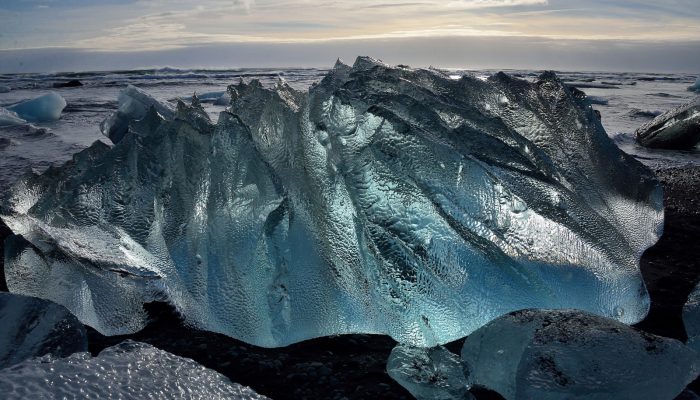
Two weeks ago, the EGU General Assembly was coming to an end in Vienna. With over 16,500 participants, this year’s edition was bigger and more varied than ever (e.g check out this good overview of the science-policy short course, published 2 days ago on geolog). The week was particularly fruitful for the cryospheric sciences and to mark this we have cherry-picked one of the winning picture o ...[Read More]
Image Of The Week – Do My Ice Deceive Me?
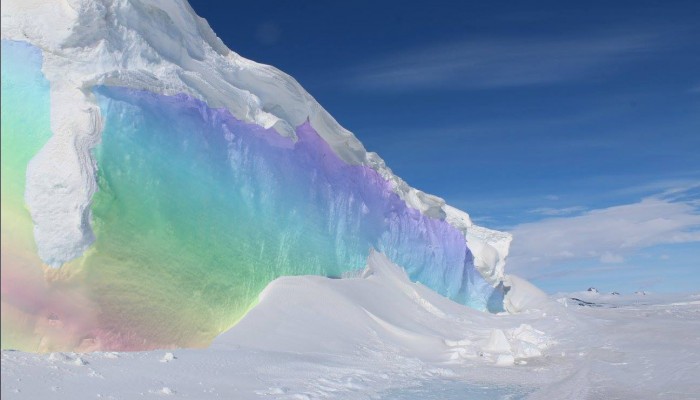
A few weeks ago, we focussed our image of the week on very particular parts of Antarctica, which display blue ice at the surface. Today we would like to put the spotlight on an even more extreme chromatic phenomenon : the Fyndið ísjaki Brandari (should be pronounced “/fɪːntɪð/ˈiːsjacɪ /ˈprantaːrɪ/“, even though a bit of phonetics never hurt anyone, for the sake of simplicity this phenomenon ...[Read More]
Image of the Week – Monitoring icy rivers from space!
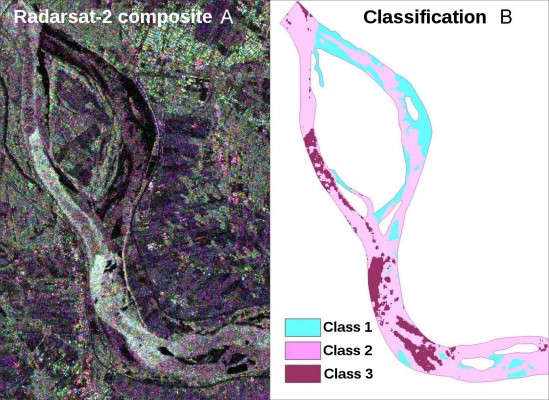
Why? When a river freezes over, it changes the amount of water that flows through the river system. River ice affects many of the world’s largest rivers, and in the Northern Hemisphere, approximately 60% of rivers experience significant seasonal effects. The formation and evolution of river ice changes river discharge and is not only of interest to local ice skating enthusiasts. The variations in ...[Read More]
Image of the Week — Last Glacial Maximum in Europe
During the last ice age*, ~70,000 to 20,000 years ago, the climate was much colder in Europe. As a result, the northern part of Europe was fully covered by the Fennoscandian (a.k.a the Scandinavian ) ice sheet, which extended up to the British Isles and some parts of Poland and Germany. In central Europe, the Alps were also almost fully glaciated. The storage of all this ice on the continent lower ...[Read More]
Image of the Week – Antarctic fieldwork 50 years ago!
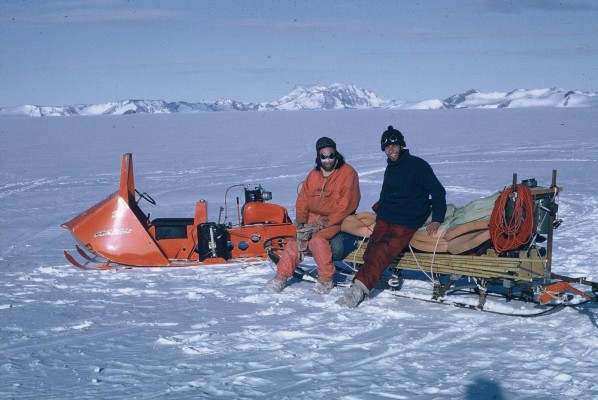
So far this blog has published many pictures of current polar field work campaigns. Today, we would like to take you back to Antarctic expeditions during the 1960s. The photos presented in this post date back from the Belgian-Dutch Antarctic field campaigns of 1964-1966. The first picture shows Ken Blaiklock (red overalls) with a Belgian surveyor. Ken was part of the 1955–58 Commonwealth Trans-Ant ...[Read More]
Image of the Week — Happy ValentICE’s day
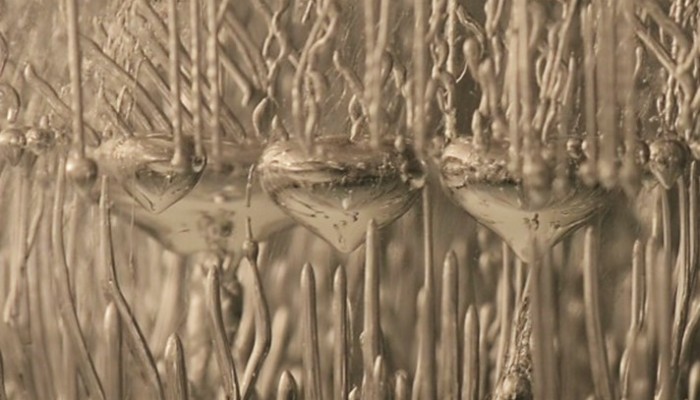
On the eve of 14 February, love and little hearts are everywhere, even trapped in lake ice! The EGU Cryosphere blog team wishes you a happy Valentine’s Day 🙂 Behind this nice picture, there is also science This picture was taken during a laboratory experiment that aimed to reproduce the bubbles observed in Arctic lake ice in the winter. In this shot, we can see two types of gas bubbles in th ...[Read More]
Image of the Week — slush on top of sea ice
Many glaciologists look forward to going on fieldtrips and then, once they are back, they make us dream by posting breathtaking photos (like THIS or THIS or THIS). However, the reality of the field can sometimes be very different…. The picture illustrates how difficult it can be to work on sea ice when the snow on top of it starts to melt and forms slush (a mixture of snow and liquid water t ...[Read More]
Image of the Week — Greenland ice sheet and clouds
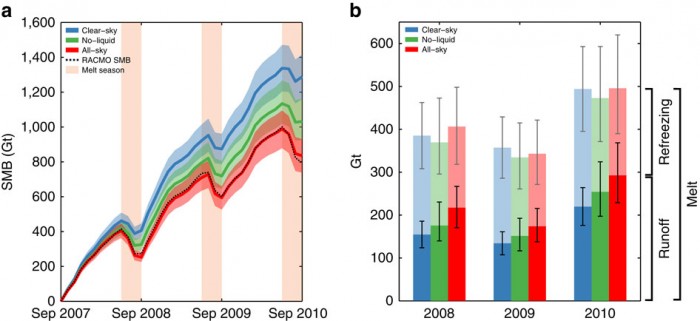
A new study combining satellite observations and model simulations shows that clouds increase meltwater runoff in Greenland by one-third compared to a cloud-free scenario. Precipitation effects not considered, clouds above the Greenland ice sheet reduce its Surface Mass Balance (SMB) [red in figure] compared to clear-sky conditions [blue in figure]. Because clouds trap the outgoing radiation from ...[Read More]
Image of the Week — Happy New Year
December 2014, 11:50 p.m., the sun licks the horizon on Derwael ice rise; It’s time to go back to the tent … The shot was taken during the 2014 IceCon Field campaign in East Antarctica (read Brice’s blog post telllling about his first journey to Antarctica). Here, you can also read about the 2016 field season of the IceCon project, which started just a few days ago.

